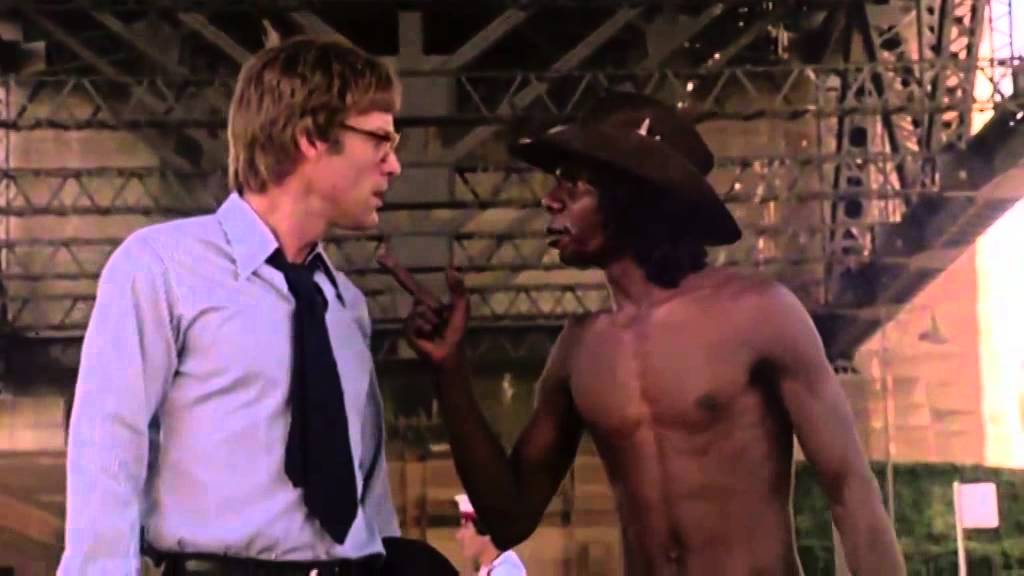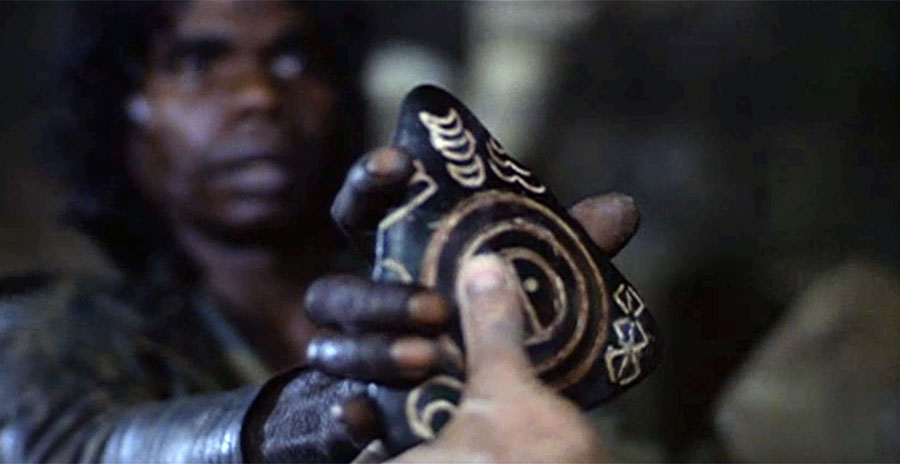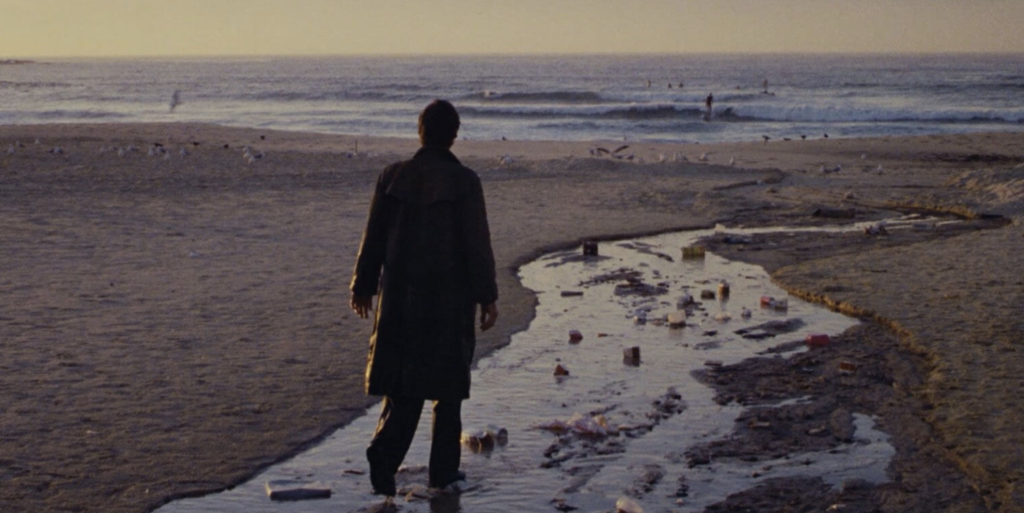| MH Rowe |

The Last Wave plays at the Trylon from Friday, September 15th, through Sunday, September 17th. Visit trylon.org for tickets and more information.
One triumph of Peter Weir’s Witness (1985) is its sense of dreamy metaphor. The score, the cinematography, the simmer of desire between its lead characters, John Book (Harrison Ford) and Rachel Lapp (Kelly McGillis), and the situation of a hard-bitten Philadelphia cop—a post-70s version of a noir archetype—wounded and hiding out in Amish country to protect a child who witnessed a homicide in a bus station bathroom, all suggest another world visible at the borders of contemporary urban life. Ours is not simply a domain of the jaded, the professional, the murderous, and the innocent. As Witness implies, other lives and other worlds tease and enchant those who have eyes to see them, cop and Amish widow alike. There’s more than we dream of in the monoculture of a decaying metropolis or in a rural enclave of the faithful.
Though Witness may be Weir’s most emotionally satisfying film, its sense of metaphor pales in comparison to Weir’s two masterpieces of the dreamed life: Picnic at Hanging Rock (1975) and The Last Wave (1977). These films announced the arrival not only of Weir but of the so-called Australian New Wave. Picnic flirts with the tropes of horror film, and it’s ultra-coherent. As in a dream, even the elements of the film that don’t make sense make sense in its atmosphere of hazy nightmare. The Last Wave, on the other hand, falls under the broad heading of films that are, essentially, perfect episodes of the Twilight Zone.
The film is set in Sydney and tells the story of David Burton (Richard Chamberlain—angular, alien, and beautiful, an incredible face, like David Bowie), a white corporate tax attorney drawn into a pro bono defense of Aboriginal men who, the audience knows, orchestrated the death of another Aboriginal man in the opening scene. Chief among the Aboriginal characters are Chris Lee (David Gulpilil—both closed and open, so young, another incredible face) and Charlie (Nandjiwarra Amagula, menacing and peaceful at once). Each of these characters spends the film straining not simply to read the signs but to identify if the signs are there at all. But signs of what? It might be signs of the apocalypse. Burton dreams of Chris, dripping wet and holding a “sacred stone,” standing in his house. Chris tells Burton that dreams are a “way of knowing things,” like seeing and hearing. Black rain falls. Burton has visions of a cataclysmic flood, drowned bodies drifting over the underwater streets. Outside his house, he hears again and again the eerie chirps of frogs that fall from the sky.

Confronting racialized mythology head-on, The Last Wave is a fantasy of re-enchantment. David Burton doesn’t become wrapped up in some mysterious subculture of Aboriginal magic and myth that descends upon him or swallows him up. It’s the other way around. He encorcells himself and others with dreams and visions pieced together from another culture. Like an apprentice mystic, he suspects that the world is not the world he knows but a screen concealing something more alien and mysterious—more aboriginal than Aboriginal. What he loses above all is the attitude of rational disenchantment that claims Aboriginal men in Sydney are “no different culturally from depressed whites,” as a frustrated friend scolds him. The friend dismisses Burton for racist romanticism. Burton insists on signs of something more.
When Burton demands in court that Chris defend himself by explaining visions of apocalyptic rain, Chris shouts, with genuine fear, “It’s you saying that.” The whole point is that Burton’s dreams, insofar as they invoke the Aboriginal Dreamtime—a spiritual realm that is “more real than reality itself,” according to an anthropologist Burton consults—represent his own original mystic powers, or delusional obsessions over a black culture that he can only imagine as a “mystery.” The film doesn’t decide the question for us. Burton may, in fact, be “Mulkurul,” a different tribe “from another world,” according to Chris. Mulkurul express themselves, in the words of the anthropologist, “through people of unusual spiritual power.” They appear at the end of a “cycle,” which ends with an apocalypse of renewal like a freeze, a flood, or a big rain. The Mulkurul are a people of signs.
The film’s key scene, for those who like a neat answer anyway, takes place in the courtroom. When Burton cross-examines the pathologist who determined the cause of death of the Aboriginal victim in the opening scene of the film, this stiff man of science doesn’t deny that magic is real. He denies the signs. Burton asks him, “Do you know what tribal sorcerers do with a bone like this?” He shows the court a claw-like bone. “Well,” the pathologist replies, “I thought that was common knowledge. He points it at his victim, and the victim dies.” Yes, Burton says, before asking, and isn’t this a death stick that could have been used in this homicide? The audience knows it is. The pathologist repeats a line of thinking that other white characters in the film have expressed: “The deceased was not a tribal man.” That there are no tribal people in the city passes for common knowledge, too.
Such common sense is not a denial of magic but an assertion that there isn’t a sign of another culture “here,” in Sydney. There isn’t another world, not in this one. And that’s exactly what Burton comes to believe—that there is and he has found the signs of it. As he demands of Chris in the courtroom, “Aren’t these sacred stones?” This is David Burton’s refrain. Aren’t these signs? Aren’t these sacred stones? Isn’t this evidence that there are tribes in the city, and doesn’t this mean the end of the world?

Apocalypse is exactly what a citizen of the monoculture, like the liberal-minded Burton, would envision when he glimpses another world. The dream of monoculture is that there are no others. A glimpse is all it takes to upend such certainty. As Burton’s vision of the “world” collapses—when his father says, “You lost the case, but you haven’t lost the world,” he replies, “I lost the world I thought I had, the world where what you just said meant anything”—he cannot articulate what a “world” should be. He instead reproaches his father, a minister and, importantly, not his biological father but his stepfather (for David Burton is a supernatural figure with a supernatural lineage), saying, “Why didn’t you tell me there were mysteries? You stood in that church and explained them away.” Enigmas haunt David Burton, and his question is not what do they mean but rather: are these signs at all? For they mean the end. His dreams may be signs. Stones may be sacred stones. Aboriginal men in Sydney may be tribal men, signs that another world has come.
The film plays it all with patient sympathy. Burton comes inevitably to believe that he may be Mulkurul. When Charlie, an Aboriginal painter and interpreter of signs himself, asks Burton, Burton says yes, he is Mulkurul. Though Chris first suggested the idea, he fears it. Charlie fears it, too. We learn from Burton’s father that Burton had terrible premonitory dreams as a child. He dreamed of his own mother’s death a month before she died.
Of course a white man would think all this, we say. Of course he would fearfully fantasize about being an avatar of a tribe that preexists Aboriginal culture. He finally drives away his patient and frightened wife (Olivia Hamnett, game but not given much to do with a thinly written character) as he acts and thinks in ways more alien and distant, to her and to their children. Like Mulkurul, he even comes from elsewhere, for Burton’s family is South American originally, as if to imply he has some distance from the English colonization of Australia. Perhaps some distance from a normative whiteness itself. Charlie first makes the connection with Burton’s extra-Australian origins when he looks at Burton’s family photos, but Burton suspects it is a haunting, prior claim. And when Burton tells Chris, “You’re in desperate trouble,” Chris retorts, “No! You in trouble.” Even the trouble implicates or inflates Burton’s importance. Even trouble re-enchants a disenchanted world.
Near the end of the film—and the last 20 minutes may well be a dream sequence—Burton finds a mask of his own face among artifacts in a sacred cave. Real or imagined, the mask tells him he is the descendant of clerics who knew precisely what the signs are. They tell of the last wave. Yet Burton’s not ordained. He’s left alone, a metaphorically drowned man. He wanders out of a sewer pipe and onto the beach. It’s morning at last. He may be awake. He may still be asleep. What he sees is too obvious to have to guess, but to Burton, it’s the final surge of vision. The last sign more than the last wave. The “wave” that comes is for him alone. To wash away, to re-enchant, to dream of being something other than what you are.

Edited by Olga Tchepikova-Treon
